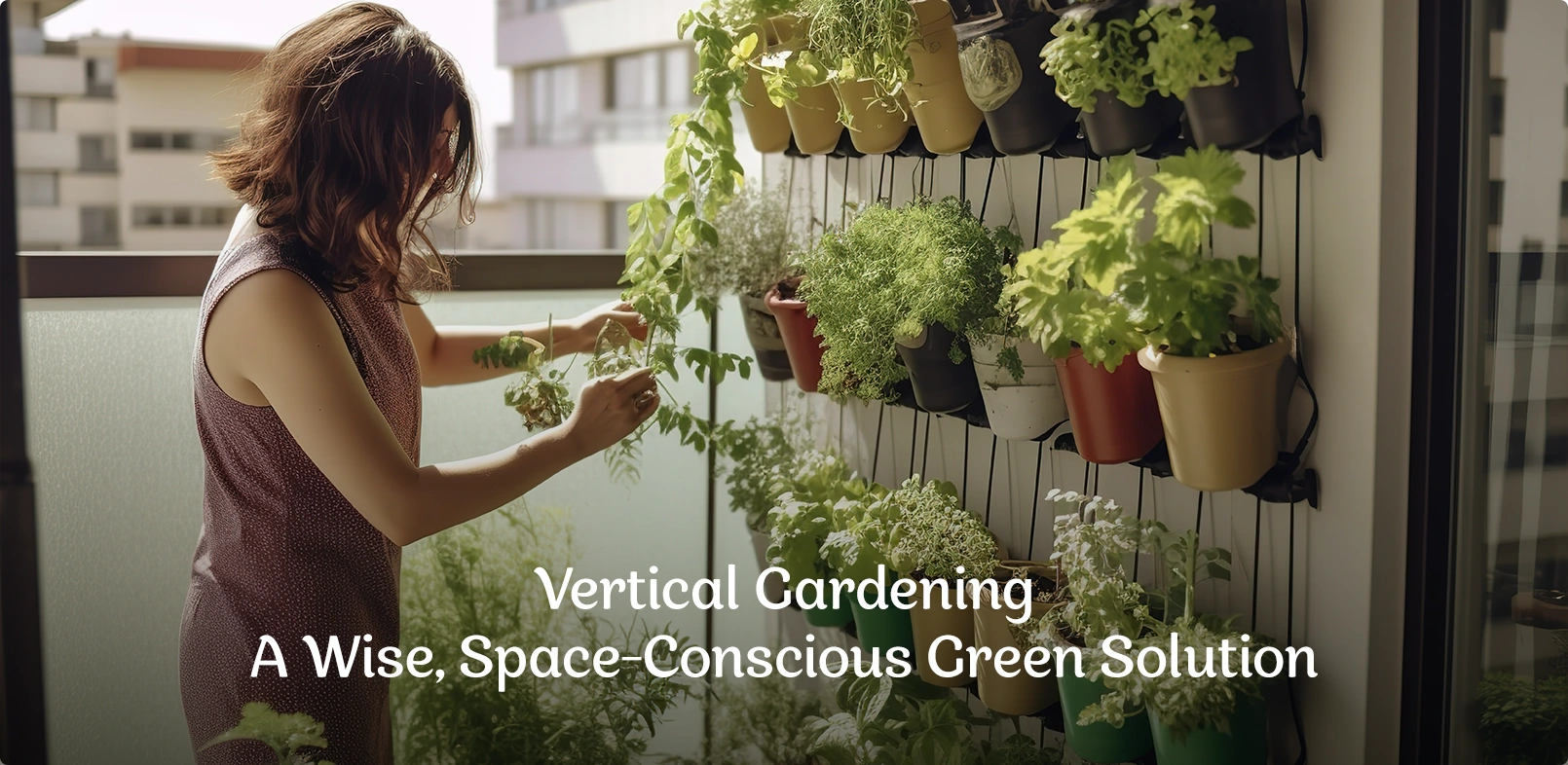
- By: admin
- Comments (0)
- Jul 8
Busy Gardener’s Guide: Essential Tips You Might Be Missing for a Thriving Garden
In an era where the spaces of the city are decreasing and nature has become a luxury, vertical gardening has become a beautiful, practical answer. Whether you have a minimal balcony, a thin backyard, or a sunlight wall, the vertical gardens can become a succulent, rich house. From vegies to flowers, vertical gardening is a clever means of growing with less – while maximizing both looks and stability.
What is Vertical Gardening?
There is a technique of planting from outwards using vertical gardening walls, tralies, towers, hanging utensils, or stacked containers. This is a magnificent horticulture technique for people with limited horizontal location, so it is ideal for urban homes, apartments and small gardens.
Vertical Gardening Ideas to Try at Home
There are countless methods of being creative with vertical gardens. Here are some ideas that are popular:
Wall Planters: employ a wooden or metal frame hanging utensils or renovated containers.
Hanging Bottles: Risse plastic bottles or mason jars for herbs and flowering plants.
Pallet Garden: Wooden palettes prove to be a great vertical growing frame with little investment.
Trailis and Climbers: beans, cucumbers, or even decorative flowers such as mount creapers.
Tower Garden: Stack the pot or use vertical towers to cultivate strawberries, letters, or other shallow vegetables.
Benefits of Vertical Gardening
The increase in vertical gardening is not a complete conservation space – there are many benefits:
Space Adaptation: You are able to cultivate a huge range of plants within a compact location.
Increased Air Circulation: Plants are less susceptible to fungi diseases due to better circulation.
Better Insect Management: Increasing your plants makes them more difficult to access for ground pests.
Decreased Weeding: With the use of low ground space, weeds decrease from an issue.
Beauty: vertical gardens bring life and attraction, otherwise for barren walls and corners.
Thermal Insulation: Green walls keep your house cool and reduce noise pollution.
Harvesting is Easy: Any more bending or kneeling – everything is at your eye level.
Better Yield: More plants can be a better crop as a result.
Environmentally Friendly: It encourages recycling and reduces carbon footprint.
Encourages Mindyfulness: taking care of plants is known to reduce stress levels and improve mood.
Best Plant for Vertical Gardening
Not all plants support vertical gardens. This design includes some who work well:
Vegetables:
– Tomato
– Spinach
– Chili
– Lettuce
– Beans
– Cucumber
Fruits:
– Strawberry
Herbs:
– Basil
– Mint
– Coriander
– Parsley
– Thyme
Flowers:
– Petunias
– Marigolds
– Indian Cress
– Morning Pride
Tip: Feed your plants regularly with NPK fertilizer to give them balanced nutrients – especially in vertical systems where soil is not plentiful.
Types of Vertical Gardening
Vertical garden can come into various forms according to design and purpose:
Green walls (living walls): Full panels of plants grown vertically on specially manufactured frames.
Trailis Structures: The best for climbing plants such as beans, ivy and peas.
Pocket Plants: Plants with a wall -attached fabric pockets, ideal for herbs and plants with shallow roots.
Vertical Hydroponic Systems: Soil-less system in which nutrients are supplied through water.
Modular System: Stacable containers or frames that can be assembled according to your needs.
Vertical Gardening Methods
There are some ways you can try:
Container Gardening: hung or stacking utensils, buckets, or recycled items.
Hydroponics: Drunk with nutritious water accelerates gardening as well as development.
Aquaponics: A system has a combination of fish cultivation and plant cultivation.
Aeroponics: Plants are cultivated in a state of air/mist without soil.
Wall Planter Panel: modular system installed on walls for decorative vertical gardens.
Each has its own advantages depending on the needs of your location, budget and plants.
Damage of Vertical Gardening
Although there are many advantages of vertical gardening, it is not without loss:
Water Issues: Water cannot distribute all plants equally; Proper plans for irrigation are required
Structural Restrictions: Some walls will not be able to tolerate the load of soil and water-intensive installations
Restricted Plant Option: Not all plants do good in vertical conditions
Maintenance: Constant pruning, fertilization and insect inspection are required due to dense leaves
Dissemination of Sunlight: Lower level plants can get less light than people at the top.
Planning good NPK fertilizers, by distributing some of these challenges for stable growth, even fights in the arrangement of tight soil.
Final Thoughts
A vertical gardening is an inventable, environmentally friendly option that also brings greenery to the most small areas. From the herbs for the kitchen, to the green walls for the balcony, just to add beauty to your home, provide a crowd of vertical garden options. And with proper care – using the best quality NPK fertilizers – you can keep your plants succulent and fruitful throughout the year.